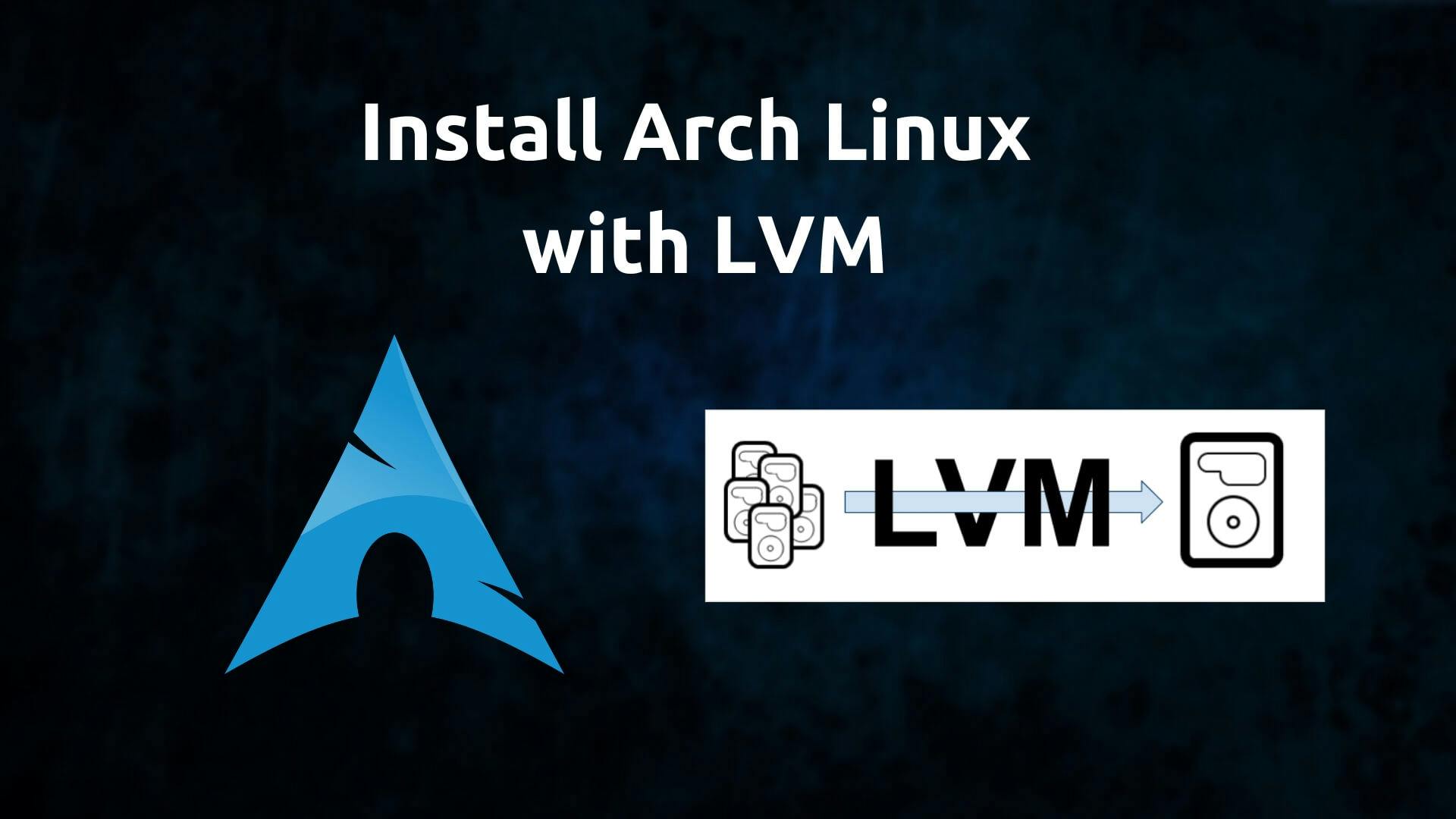
How to Install Arch Linux with LVM (Logical Volume Manager)
Updated
Have you ever wanted more storage without resetting a partition? I'll show you how to install Arch Linux with LVM, the Logical Volume Manager.

Intro
The Arch Linux distribution is the home of a tinkerer's dream.
Back then, when I was a heavy computer user, I would enjoy tinkering with the system.
It amazed me what I can do with only the arch wiki and the command line at my disposal.
The latest Linux software is available is through the rolling release packages and the AUR with pacman.
The AUR is an Arch Linux user repository developed by the community where people share and support builds of software packages.
Accessing the AUR is as simple as using a similar packager manager that functions just like pacman:
yay -S (aur_package)
yay has the same functionalities just like pacman, but much more when I would install AUR packages.
Moving onwards, I was scanning through the Arch Linux documentation when I was looking for the best way to update my new system.
Eventually, I came across information about disks.
Specifically, Linux file systems, and what each one is used for.
This lead to me experimenting with one package available on Linux called F2FS.
I believed that F2FS was the perfect choice for me since my laptop on Linux has an NVME SSD.
Having a specific Linux file system for my hard drive would improve the overall performance, not having to worry about optimizing it myself.
For how long did I use the Arch Linux installation when trying out new packages?
I ended up using one of the software packages called F2FS on Arch Linux for quite some time.

In fact, I used it for approximately 3 months when I started to get used to Arch Linux.
I spent most of my time on Arch Linux seeing what this distro had to offer.
In Arch Linux, I discovered that setting up basic tweaks with battery life tools, desktop environment, video memory, and users took much longer as compared to an easier distro.
It felt like, with Arch Linux, I finally had a system that was optimized to the extreme (not exaggerating).
Reverting back to Ubuntu would end up being a lost cause.
But in reality, the EXT4 package was more than enough and I barely noticed any hardware improvements.
Since F2FS was really meant to be used on micro-sized hardware chips, I removed it and had to reinstall the base system from the repository again!
I'd figured, "Is there a way I can experiment with different internals without affecting my system"?
Yes, there was; Virtualization!
How was my experience when switching over to KVM and LVM?
I decided to try out a natively supported hypervisor which was KVM.
When I finished installing it, I had no clue how to use it.
Coming from a VirtualBox background, KVM did things differently.
Usually, the installation process of using a virtual machine for Arch users is pretty much a straightforward process.
I installed this and that without giving much thought.
With KVM, setting up basic settings such as the GUI was something I had to open Google for support.
Plus, even before that, I had trouble launching the program from a couple of commands I attempted to use.
Perhaps I missed a dependency I couldn't find, but it really had to do with not enabling one of the Linux systemd services.
But nonetheless, I quickly adapted to it, and I noticed that there were fewer bottlenecks when doing intensive tasks, such as launching two Linux virtual labs simultaneously on the desktop environment.
After getting used to KVM, my search results recommended a wiki page talking about LVM.
The Arch Linux wiki is a great source to follow through and learn more.
In simple terms, LVM is a tool that lets you create virtual partitions, which means that if you have an urge to get rid of one that isn't used anymore, LVM can remove it without leaving any side-effects.
Or, what if you need a certain partition to have more disk storage when the time comes? No worries, LVM can extend it on the fly!
And the rest is history.
What software did I use to create the video?
At the time of recording this video, my current setup was Fedora for my distribution of choice because installing Arch was too cumbersome for me to screen capture.
Plus, it was updated just as often as Arch Linux.
If you’re a complete Linux beginner to Arch Linux, I recommend that you download a configuration such as Vbox and Ubuntu.
